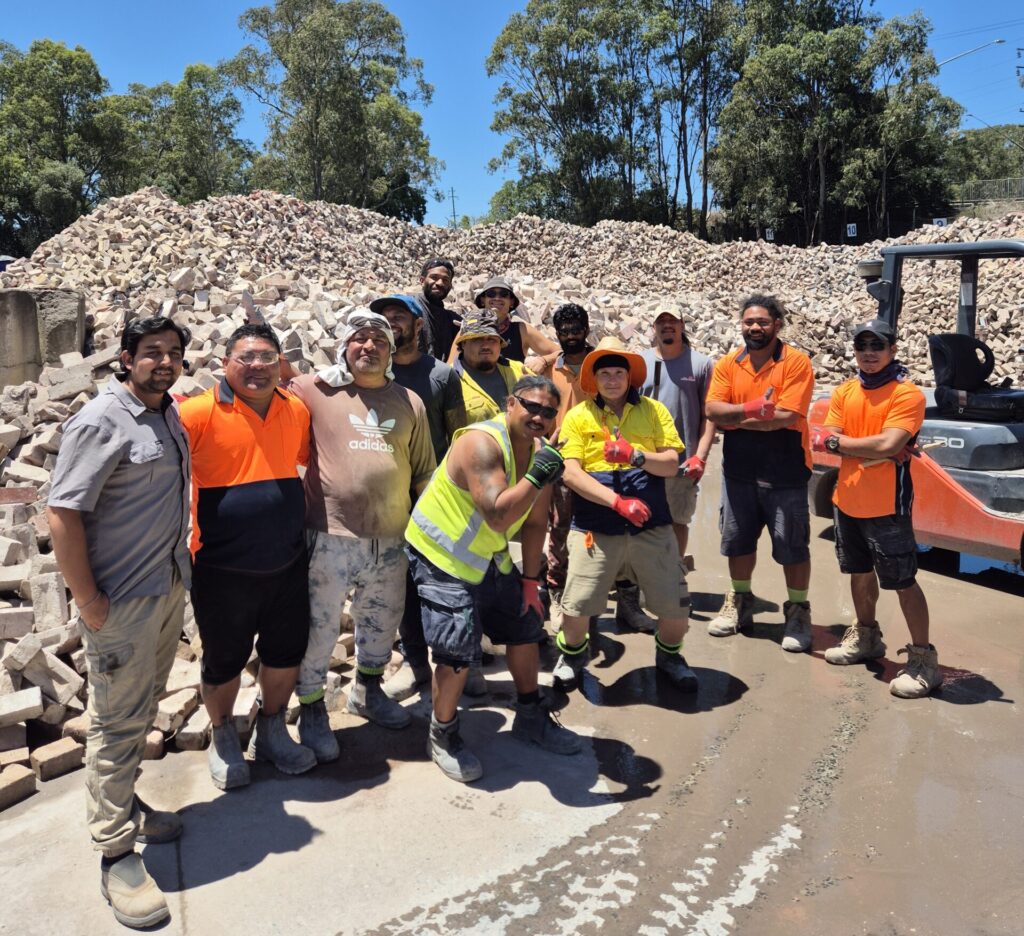How to Pair Recycled Bricks With Native Australian Plants (and Look Like a Pro Doing It)

Let’s be real—gardening in Australia isn’t for the faint-hearted. Between the scorching sun, unpredictable rain, and soil that’s either clay or sand (no in-between), creating a stunning outdoor space can feel like a battle. But what if we told you there’s a secret weapon hiding in plain sight? Recycled bricks. Yep, those rugged, character-filled chunks of history aren’t just for old chimneys or “quirky” backyard sculptures. Paired with hardy native plants, they can transform your garden into a low-maintenance, eco-friendly oasis. And hey, if you’re in Sydney, Brisbane, Perth, or anywhere nearby, our mates at The Brick Pit have got your back with top-notch recycled bricks (and a side of expert advice).
Why Recycled Bricks + Native Plants = Gardening Gold
We’ve all seen those pristine gardens with flawless pavers and fussy roses. Cute, but let’s face it—they’re about as sustainable as a plastic lawn. Recycled bricks, on the other hand, bring grit, texture, and a story to your space. Throw in some native plants (you know, the ones that actually survive our climate), and suddenly, your garden becomes a love letter to Aussie resilience.
Here’s why this combo slaps:
- Eco-warrior cred: Using second-hand bricks or reclaimed bricks reduces waste and keeps materials out of landfills. Win for the planet, win for your conscience.
- Built to last: Old used bricks, especially sandstock bricks or red bricks, have already weathered decades. They won’t crack under pressure (unlike that cheap concrete from Bunnings).
- Native plants thrive: Aussie flora evolved to handle our wild weather. Pair them with porous, well-draining bricks, and you’ve got a match made in horticultural heaven.
FYI, if you’re Googling “recycled bricks near me,” The Brick Pit is your go-to. They’ve been salvaging bricks across Sydney, Brisbane, and Perth for years, and their team knows how to hook you up with the good stuff.
Choosing Your Bricks: A Crash Course
Not all bricks are created equal. Some are perfect for retaining walls, others for brick edging or pathways. Let’s break it down:
Types of Recycled Bricks (and Where They Shine)
- Sandstock bricks: Rough-textured, earthy tones. Ideal for rustic paving bricks or garden borders.
- Red bricks: Classic and versatile. Use them for everything from raised garden beds to fire pits.
- Paving bricks: Flat and uniform. Perfect for paths or patios (no tripping hazards here).
Pro tip: Mix and match! A blend of old used bricks adds charm and avoids that “too perfect” look. IMO, a little chaos makes a garden feel alive.
Design Ideas That Won’t Make Your Neighbours Cringe
1. Retaining Walls That Actually Retain… Your Sanity
Got a sloped yard? Build a retaining wall with recycled bricks to create terraced planting zones. Native grasses like Lomandra or Dianella spill over the edges, softening the structure. Bonus: The bricks’ natural gaps allow drainage, so your plants won’t drown in a downpour.
“But where do I even start?” Glad you asked. Companies like The Brick Pit offer brick disposal services, meaning you can offload extras hassle-free. They’ll even help you calculate how many bricks you’ll need.
2. Edging That’s Edge-y (In a Good Way)
Tired of plastic lawn edging that warps in the sun? Use brick edging to define garden beds or pathways. Pro tip: Bury bricks vertically for a sleek, modern look. Pair with groundcovers like Myoporum or Pig Face—they’ll sprawl over the bricks like a living mosaic.
3. Pathways That Say “I’m Chill, But I Have My Life Together”
Lay paving bricks in a herringbone pattern and let native violets or Native Violet (yes, that’s its real name) nestle between the cracks. It’s low-maintenance, drought-tolerant, and way more interesting than plain gravel.
Native Plants That Won’t Ghost You After a Heatwave
Let’s be honest: Not all plants deserve a spot in your garden. Here are our no-fail picks:
| Plant | Why We Love It | Pair With |
|---|---|---|
| Kangaroo Paw | Bold colors, thrives in full sun | Red brick retaining walls |
| Grevillea | Bird-attracting, blooms year-round | Sandstock brick edging |
| Blueberry Ash | Subtle flowers, handles shade | Paving brick pathways |
Hot take: If your plant needs more water than a camel carries, it’s not worth it. Stick to natives.
Sustainability: It’s Not Just a Buzzword
Using recycled bricks isn’t just about aesthetics—it’s a middle finger to fast fashion landscaping. By choosing materials like reclaimed bricks from The Brick Pit, you’re reducing demand for new resources. Plus, native plants require less water, fewer chemicals, and provide habitat for local wildlife.
Fun fact: The Brick Pit’s team once helped a client in Brisbane repurpose 500+ bricks from a demolished school into a garden wall. Now that’s storytelling.
3 Questions Everyone Asks (But Is Too Afraid to Google)
1. “Are recycled bricks cheaper than new ones?”
Usually, yes! Since they’re salvaged, you skip the manufacturing cost. Just factor in cleaning or delivery.
2. “How do I clean old used bricks?”
A stiff brush and water usually do the trick. For stubborn mortar, ask The Brick Pit—they’ve seen it all.
3. “Can I use bricks for a fire pit?”
Absolutely, but stick to red bricks or sandstock bricks. Avoid modern concrete bricks—they can explode. Yikes.
Final Thoughts: Don’t Overthink It
Pairing recycled bricks with native plants isn’t rocket science. It’s about embracing imperfection, sustainability, and a little Aussie ingenuity. Whether you’re in Sydney battling clay soil or Perth dealing with sand, The Brick Pit has the materials (and the know-how) to make your garden dreams less… dreamy and more real.
So, what are you waiting for? Grab some bricks, pick some plants, and get dirty. And if you stuff up? Hey, at least the possums will appreciate the effort 🙂
P.S. Need help finding the nearest brick supplier or calculating how many bricks you’ll need? Hit up The Brick Pit—they’re legends at this stuff.


